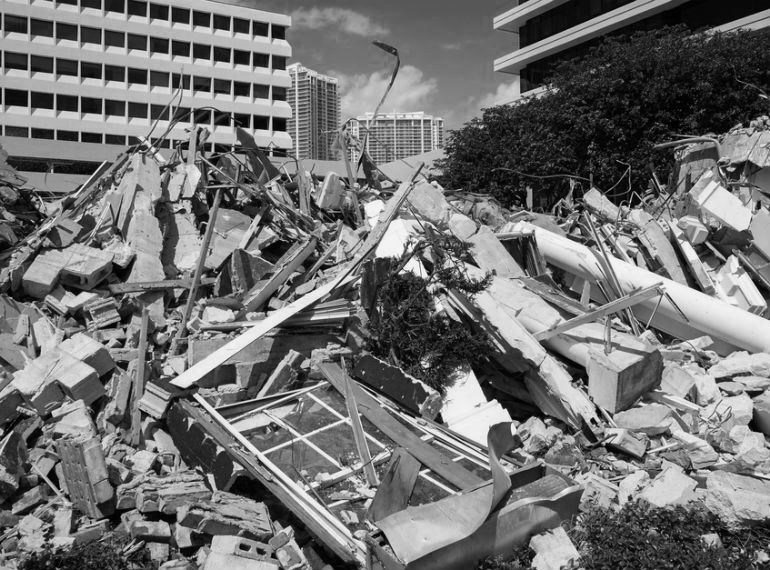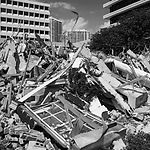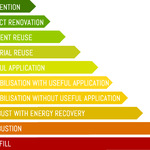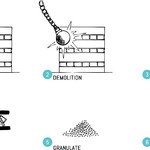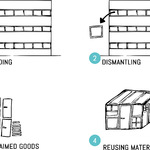Sixty million tonnes.
Sixty million, that’s the amount of waste produced in the Netherlands in 2010. Being an architecture student you might ask yourself why that number should mean anything to you, why that would be of any significance to our chosen profession? And the answer is actually really simple. The building sector, the sector we chose to participate in, is the biggest contributor to this number; 39,2% to be exact.
But the question remains, why would this number be of significance for us students? And once again the answer is quite simple, us students are the future. We have the ability to make changes regarding this problem, but we can only do so if we are educated about the problems in our chosen field. And the main problem right now is that in the building sector demolition is the current practice. Once there is no use for a building anymore, the building will most likely be demolished. A wrecking ball will literally destroy the building creating rough debris. Rough debris containing chunks of concrete, complete windows and doors. Steel beams and what not. The rough debris (mostly the bricks and concrete) is than further processed to create granulate. Tiny pieces of material that is reused in the production of roads.
This current process, granulate from demolition being used in roads, is considered to be a high quality form of reuse according to the Dutch Government. ‘High Quality?’ I can hear you think, how can this be considered high quality?
If we look at the ‘Delft Ladder’ regarding waste treatment, the current process would be number 6 on the ladder. ‘Immobilisation with useful application.’ It’s not only directly clear that we can improve in this; we could also question how long the current practice is still applicable. There are only that many roads to be laid in the Netherlands.
If we want to reduce that number mentioned in the beginning. The sixty million tonnes of waste, we have to change our current practice. We literally have to climb that ladder and look for other solutions, the best of course being prevention. But now a days there will still be building that are no longer in use, that have to be removed. If the building itself cannot be reused, it should be removed.
But here is the difference. The building should be removed, but not by demolition. The demolition process should change into a reclamation process. Buildings should be carefully taken a part, making sure the elements can be reused.
Now the question may still be there, how does this change affect me as student? If we do not start designing buildings that can be easily taken apart there will be no change in the demolition process. But just designing buildings that can be taken apart isn’t reducing the waste problem. Not if we design these buildings with new materials.
Ultimately it would be best if we start designing buildings using materials or elements that were once located in other buildings. An example of this changed process is the Vechtclub XL in Utrecht. These vacant buildings have redesigned by creating separation walls from old doors.
